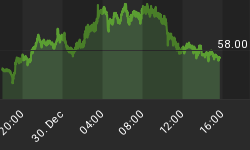Many reports have been published over the past few days about stock market seasonality and, specifically, about September typically being the worst month of the year.
I included the following paragraph in a recent post: "Seasonality indicates that 'September has firmly secured the rank as the worst month of the year' (Stock Trader's Almanac), but that a year-end rally typically starts in late September / early October."
September has certainly got off to a rough start, with both the MSCI World Index and the MSCI Emerging Markets Index having declined every single trading day since September 1.
I realize numerous studies have been done on the historical pattern of monthly returns, but in order to gain a first-hand feel for the data, I have researched monthly returns of the Dow Jones Industrial Index from January 1958 to August 2008. Some interesting statistics are summarized in the table below.

The following two tables show the percentage positive months (top graph) and the average monthly return (bottom graph) respectively.

It is clear from the above that September, on average, has historically been the worst month. But stock markets recovered after that and October, November, December and January have traditionally been good months.
Time will tell whether the current panic mode will make way for a better period in the weeks to come.
















